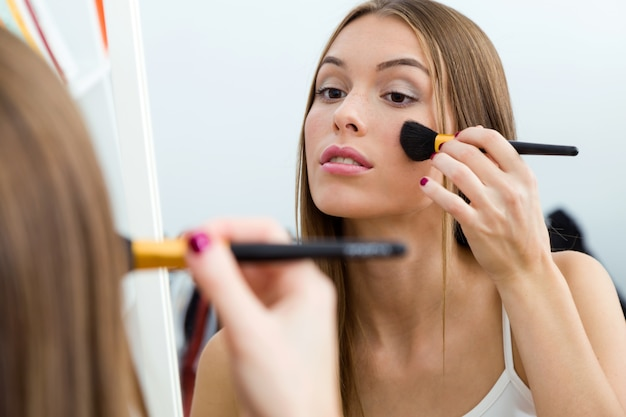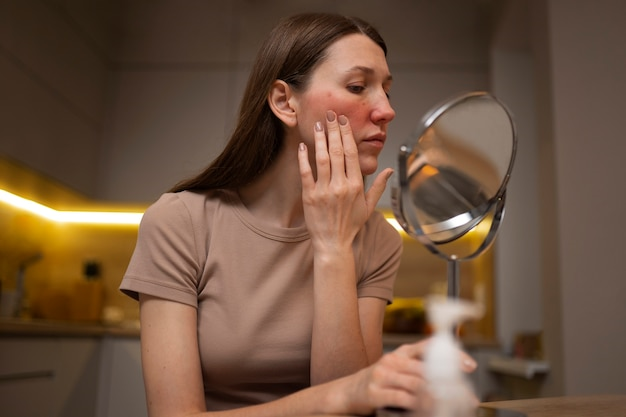Skin Concerns 101: Acne, Hyperpigmentation, and Dry Skin Solutions
When it comes to achieving healthy and radiant skin, understanding and addressing common skin concerns is essential. Acne, hyperpigmentation, and dry skin are three prevalent issues that can affect individuals of all ages and skin types. In this guide, we will delve into these skin concerns and provide you with effective solutions to combat them. From acne treatment options and hyperpigmentation remedies to dry skin care routines and moisturizing solutions, we will explore a range of strategies to help you achieve your desired skin goals. Whether you are looking for natural remedies or seeking product recommendations, this comprehensive guide aims to equip you with the knowledge and tools necessary to tackle these challenges head-on. Let’s dive into the world of skincare and discover the solutions that will transform your skin.

Understanding Acne and Effective Treatment Options
Acne is a common skin condition characterized by the presence of pimples, blackheads, and whiteheads. It occurs when hair follicles become clogged with oil and dead skin cells. To effectively address acne, it is crucial to adopt a multi-dimensional approach. Some acne treatment options include:
-
- Topical Treatments
-
- Oral Medications
-
- Lifestyle Modifications
Remedies for Hyperpigmentation
Hyperpigmentation refers to dark patches or spots that appear on the skin due to an excess production of melanin. Understanding the causes and implementing suitable remedies can help address hyperpigmentation effectively. Some hyperpigmentation remedies include:
-
- Topical Treatments
-
- Chemical Peels
-
- Laser Treatments
Developing a Dry Skin Care Routine
Dry skin lacks moisture and can feel tight, rough, and uncomfortable. A dedicated dry skin care routine can help restore hydration and maintain a healthy moisture barrier. Here’s a step-by-step guide:
-
- Use a mild, non-drying cleanser to remove impurities without stripping away natural oils.
-
- Incorporate hydrating toners infused with ingredients like hyaluronic acid to replenish moisture and soothe dryness.
-
- Opt for rich, emollient moisturizers containing ingredients like ceramides, glycerin, and shea butter to lock in moisture and nourish the skin.
-
- Gently exfoliate the skin 1-2 times a week to remove dead skin cells and promote a smoother texture. Avoid harsh scrubs that can further irritate dry skin.
-
- Always apply a broad-spectrum sunscreen with a high SPF to shield your skin from harmful UV rays, which can exacerbate dryness.
Solutions for Acne-Prone Skin: Preventing Breakouts
Individuals with acne-prone skin require specialized care to prevent breakouts and maintain clear skin. Here are some solutions to consider:
-
- Choose skincare and cosmetic products labeled “non-comedogenic” to avoid pore-clogging ingredients that can trigger acne.
-
- Use oil-free or mattifying moisturizers, foundations, and primers to help control excess oil and shine.
-
- Cleanse your skin twice daily to remove dirt, bacteria, and excess oil that can contribute to acne formation.
-
- Apply targeted treatments, such as benzoyl peroxide or salicylic acid, to individual blemishes to reduce inflammation and promote healing.
The Importance of a Dry Skin Moisturizer: Nourishing Your Skin
Dry skin is characterized by a lack of moisture and can often feel tight, flaky, and uncomfortable. Incorporating a suitable moisturizer into your skincare routine is essential. Here’s why:
-
- Dry skin can be caused by factors such as genetics, environmental conditions, harsh skincare products, and even certain medical conditions. By identifying and addressing the root cause, you can effectively manage and alleviate dry skin concerns.
-
- Look for moisturizers with hydrating ingredients like hyaluronic acid, ceramides, glycerin, and natural oils. These ingredients help lock in moisture, strengthen the skin barrier, and provide long-lasting hydration.
-
- To get the most out of your dry skin moisturizer, it’s important to apply it correctly. Ensure your skin is clean and slightly damp before applying the moisturizer. Gently massage it into your skin using upward motions, allowing the product to fully absorb.
How to get rid of acne naturally
Dealing with acne can be frustrating, and many individuals seek natural remedies to address this common skin concern. Here’s how to get rid of acne naturally:
Cleanse with Gentle Ingredients: Opt for natural cleansers that are free from harsh chemicals and sulfates. Look for ingredients like tea tree oil, aloe vera, and green tea, which have antimicrobial and soothing properties.
Use Natural Spot Treatments: Apply natural ingredients like tea tree oil, witch hazel, and aloe vera gel directly to blemishes to reduce inflammation and promote healing.
Incorporate Skin-Friendly Foods: Consume a balanced diet rich in fruits, vegetables, whole grains, and lean proteins. These foods provide essential nutrients that promote healthy skin and help prevent acne breakouts.
Hyperpigmentation Creams: Targeted Treatment for Even-Toned Skin
Hyperpigmentation, characterized by dark patches or spots on the skin, can be effectively treated with topical creams. Here’s what you need to know:
-
- Hyperpigmentation can be caused by sun exposure, hormonal changes, post-inflammatory hyperpigmentation (PIH), and certain medical conditions. Identifying the cause helps determine the most effective treatment approach.
-
- Look for creams containing ingredients like hydroquinone, kojic acid, vitamin C, licorice extract, and niacinamide. These ingredients help lighten dark spots, even out skin tone, and inhibit melanin production.
-
- Follow the instructions provided with the cream, and be patient as results may take time. Apply the cream to clean, dry skin and incorporate it into your skincare routine consistently for optimal results.
Best Products for Acne-Prone Skin: Aiding in Clearer Complexion
Choosing the right skincare products is crucial for individuals with acne-prone skin. Here are some recommendations:
-
- Opt for non-comedogenic, oil-free cleansers that effectively remove impurities without stripping the skin’s natural moisture barrier.
-
- Incorporate products containing salicylic acid, which helps unclog pores, exfoliate dead skin cells, and reduce acne breakouts.
-
- Choose oil-free, lightweight moisturizers that hydrate the skin without clogging pores. Look for ingredients like hyaluronic acid and ceramides for added benefits.
-
- Use makeup products specifically formulated for acne-prone skin, labeled as non-comedogenic, which means they won’t clog pores and contribute to breakouts.
How to Treat Hyperpigmentation: Restoring an Even Skin Tone
Hyperpigmentation refers to dark patches or spots on the skin caused by an overproduction of melanin. Here are effective ways to treat hyperpigmentation:
-
- Look for products containing ingredients like hydroquinone, kojic acid, azelaic acid, or vitamin C. These ingredients can help fade hyperpigmentation and even out skin tone when used consistently.
-
- Consider professional chemical peel treatments that exfoliate the skin’s top layer, reducing the appearance of hyperpigmentation and promoting a more uniform complexion.
-
- Microneedling involves using tiny needles to stimulate collagen production and promote skin rejuvenation, leading to a reduction in hyperpigmentation.
Acne Scars Treatment Options: Enhancing Skin Texture
Acne scars can be distressing, but there are various treatment options available to improve their appearance. Here’s what you need to know:
-
- Fractional laser treatments can target the damaged skin and stimulate collagen production, resulting in smoother, more even-textured skin.
-
- Microneedling combined with platelet-rich plasma (PRP) can help improve the appearance of acne scars by promoting collagen synthesis and enhancing skin regeneration.
-
- Superficial or medium-depth chemical peels can help minimize the appearance of acne scars by removing the damaged outer layers of skin and stimulating cell turnover.
Hyperpigmentation Home Remedies: Natural Approaches to Even Skin Tone
If you prefer natural remedies, there are several options to address hyperpigmentation effectively. Here are some home remedies to consider:
Lemon Juice: The citric acid in lemon juice has natural skin lightening properties. Apply diluted lemon juice to dark spots for a few minutes before rinsing off.
Aloe Vera Gel: Apply pure aloe vera gel to hyperpigmented areas to soothe the skin, reduce inflammation, and potentially lighten dark spots over time.
Turmeric Paste: Make a paste using turmeric powder and water or milk. Apply it to hyperpigmented areas and leave it on for 15-20 minutes before rinsing off. Turmeric contains curcumin, which has antioxidant and skin-brightening properties.
Dry Skin Care Tips and Tricks: Nurturing and Hydrating Your Skin
Dry skin requires special care to maintain hydration and prevent discomfort. Here are some tips and tricks for managing dry skin:
-
- Use mild, fragrance-free cleansers that don’t strip away natural oils. Avoid hot water and opt for lukewarm water when cleansing to prevent further dryness.
-
- Choose moisturizers rich in emollients and humectants like hyaluronic acid and glycerin. Apply them immediately after showering or washing your face to lock in moisture.
-
- Invest in a humidifier to add moisture to the air in your home, especially during dry seasons. This can help prevent excessive evaporation of moisture from your skin.
Natural Remedies for Hyperpigmentation: Harnessing the Power of Nature
Nature provides us with numerous ingredients that can help lighten hyperpigmentation naturally. Consider these natural remedies:
Apple Cider Vinegar: Dilute apple cider vinegar with water and apply it to dark spots using a cotton pad. Leave it on for a few minutes before rinsing off. Apple cider vinegar contains acetic acid, which may help lighten hyperpigmentation.
Green Tea Extract: Apply cooled green tea bags or green tea extract to hyperpigmented areas. Green tea contains antioxidants that can help reduce inflammation and potentially fade dark spots.
Milk Mask: Create a mask using milk and honey. Apply it to hyperpigmented areas and leave it on for 15-20 minutes before rinsing off. Milk contains lactic acid, which can exfoliate the skin and promote a more even complexion.
By now, you should have a better understanding of the three common skin concerns: acne, hyperpigmentation, and dry skin, and the various solutions available to address them. Remember, each individual’s skin is unique, and what works for one person may not work for another. It is crucial to listen to your skin, be patient, and adopt a consistent skincare routine tailored to your specific needs. Whether you choose to explore natural remedies, incorporate targeted treatments, or seek professional assistance, the key is to prioritize your skin’s health and well-being. With the knowledge gained from this guide, you are now equipped with the tools to embark on a skincare journey that will help you achieve the healthy, clear, and glowing complexion you desire. Take control of your skin concerns, embrace the appropriate solutions, and enjoy the confidence that comes with a revitalized, vibrant complexion. Your skin deserves the best care, so go forth and conquer these skin concerns with determination and self-care.




